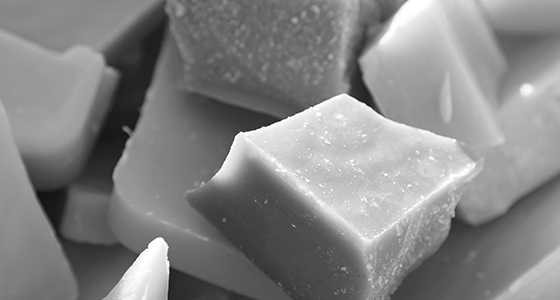Synthetic Waxes do not occur naturally, they are synthesized. These waxes can imitate the physical properties of naturally occuring waxes, as well as possess unique characteristics that natural waxes do not. These waxes can be used across multiple industries and applications. Cerax has access to and knowledge about how these waxes can be used in direct product applications. We also have the ability to combine these waxes to formulate very specific performance conditions. Synthetic waxes can be functionalised through oxidation, saponification and reactive grafting to perform specific duties. Due to their hardness they can also be micronized (milled) to nano particle sizes to form important components in coatings and ink formulations. Cerax offers a full range of synthetic waxes as well as modifidied variants of these waxes.
Synthetic Waxes

Description
Fischer-Tropsch (FT) Waxes are pure hydrocarbon waxes ranging from medium to very hard waxes. The FT hard waxes with high molecular weights have high melting points, superior hardness and low viscosities. FT waxes are synthetically produced from carbon monoxide and hydrogen by using the Fischer-Tropsch gas-to-liquids (GTL) technology. The resulting waxes are straight chain hydrocarbons of consistent quality and purity with unique and desirable properties. These waxes can be modified further to produce a wide range of physical and chemical characteristics suited to a range of applications. Cerax offers a range of high-melt point FT waxes, used as performance additives and also medium melt point derivatives, which can replicate typical paraffin wax characteristics.

Description
Polyethylene (PE) Wax is manufactured as first intention product or as by-product from polyethylene synthesis using catalytic polymerisation, most commonly utilising the Ziegler-Natta catalyst. PE wax can also be produced as a result of controlled thermal degradation of polyethylene. In general polyethylene waxes have higher molecular weights and more branched hydrocarbons than Fischer-Tropsch waxes, which yield products with higher melt melting points, higher melt flow viscosities and similar hardness. It is possible to functionalise polythylene wax through oxidation or reactive grafting to enhance the properties of the waxes, specifically regarding free-surface energy and viscosity. The waxes are commonly used in polymer processing, due to their compatibility with polymers, and production of dispersions and emulsions. Certain grades are certified for food contact in specific applications.

Description
Polypropylene (PP) Wax is manufactured as by-product from polypropylene synthesis or as a result of controlled pyrolysis of polypropylene. Polypropylene wax may be used as a viscosity modifier in colour matserbatch production or micronized to give coating scratch resistance.
